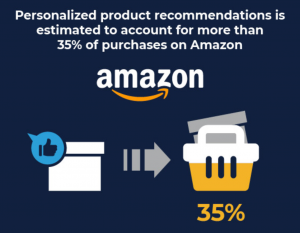— December 29, 2018
A 2017 report from Gallup found that only 13% of employees worldwide are engaged at work. Think that’s not a big deal?
Think again.
Employee engagement matters because engaged employees are driven employees—they’re the ones who more readily roll up their sleeves to get stuff done. In other words, they show enthusiasm and zeal, and are willing to spend more time and effort on your company’s mission.
Compare these workers to unengaged employees. Unengaged employees are disconnected and uninterested. They may even be hostile to both other coworkers and customers. In this way, they’re a potential hazard to your company’s profitability.
But how do you engage your employees? That is, how do you create an engaging workplace environment?
Here are five golden rules to follow.
1. Build trust with your employees
A survey conducted by EY over eight countries, including the U.S., found that less than half of professional workers trusted their employers in 2016.
But trust is essential to the workplace. In fact, research shows that the majority of engaged employees report trusting their managers. Moreover, higher levels of trust are connected to greater morale and productivity.
To build trust with your employees, you need to be honest, communicative, and transparent. Consider doing one or a few of the following to enhance trust in the workplace:
- Hold open forums for employees to ask executives questions.
- Involve more people in decision making. For instance, poll employees or actively ask for their input.
- Clearly explain the reasoning behind major organizational decisions.
- Publicly acknowledge mistakes and failures.
Don’t keep your employees in the dark. A cloak-and-dagger atmosphere in the workplace conveys that you don’t trust employees or that they are not worthy of insider information.
2. Recognize your employees
Remember that your employees are not tireless worker bees. They get tired and frustrated, though more often than not, they may not openly share this with you. That’s not a pressing issue—any job can be aggravating, after all—but of larger concern is when your employees feel underappreciated.
Employees who feel undervalued are unengaged and dissatisfied with their work. And as MIT professor Dan Ariely’s research shows, that can be costly to organizations.
To make amends and better motivate your workers, you should recognize them for both their success and their efforts.
The best part? It doesn’t take a lot to show appreciation.
Show gratitude to your employees by trying one or more of the following gestures:
- Giving positive feedback after a job well done
- Treating people or teams to a celebratory lunch or dinner
- Writing personalized thank you notes
- Bringing in office snacks or treats, e.g., donuts
- Implementing an award, like Employee of the Month
3. Encourage personal and professional development
If you’ve ever had a job that was too easy for you, then you know how slowly time can pass at work. Work boredom is suffocating and makes employees feel either zombie-like or restless and antsy for more.
Not surprisingly, employees who feel challenged by their jobs tend to be more engaged. Thus, it’s worth investing in training and coaching opportunities for your workers.
This could include sponsoring employees to attend conferences, reimbursing relevant courses and certifications, or even buying books and educational materials for your office.
Besides increasing engagement, making these opportunities available to your workers has a threefold benefit for your organization:
- By learning more skills, your workers’ productive capacity increases.
- With more educated employees, your company’s wealth of knowledge increases.
- Employees who learn together may improve their work relationships and feel more loyal to their company.
4. Give your employees independence
How closely do you manage your employees?
Maybe you’re just a well-meaning perfectionist, but the more you micromanage, the more you show your employees your lack of confidence in their skills.
Remember that mistakes are inevitable but also provide an opportunity for growth. Learning from them trains employees to be better, so look for ways to let them take the reins—for instance, by giving them responsibility over a large project or task.
Promoting more autonomy in the workplace will even benefit you in that you don’t have to give the green light on every project or specify every last detail to include.
Moreover, entrusting your workers with larger responsibilities shows that you have faith in them. This will simultaneously build trust while also nudge them to prove themselves and live up to your expectations. Employees who feel both autonomous and passionate about their work are ultimately a force to be reckoned with, and can help drive innovation as well as top results for your company.
Just remember that empowering your employees to be independent doesn’t mean ignoring them or refusing guidance. Provide help where needed, but avoid holding their hand.
5. Don’t skimp on the benefits
According to the two-factor theory of motivation by Frederick Herzberg, creating an engaging workplace depends on the presence of both motivators and hygiene.
Motivators refer to the intrinsic factors that shape a workplace, e.g., job recognition, sense of achievement, and opportunities to grow. The presence of these factors enhances employee motivation, and have largely been discussed in the above golden rules.
Hygiene, on the other hand, is made up of factors extrinsic to a job, such as salary, work conditions, and company policies. According to psychologist Herzberg, these factors influence whether employees feel satisfied or dissatisfied.
You can put the idea into practice by providing benefits and perks that are sure to satisfy workers. That might mean:
- Giving employees extra time off or even unlimited vacation
- Allowing employees to work remotely
- Ensuring salaries are competitive
- Planning company-wide trips
- Extending parental leave
- Implementing a wellness program to encourage fitness memberships
Final Takeaways
There’s more than one benefit to having high employee engagement. Productivity, morale, and employee retention are all positively impacted when employees are actively engaged.
But creating an environment of engaged workers doesn’t happen overnight. It requires a continued investment of both time and effort. Don’t let that scare you off, though. The rewards for having a strong organizational culture are tremendous in terms of productivity, profit, and satisfaction—a tradeoff that can’t easily be quantified.
Business & Finance Articles on Business 2 Community
(71)






